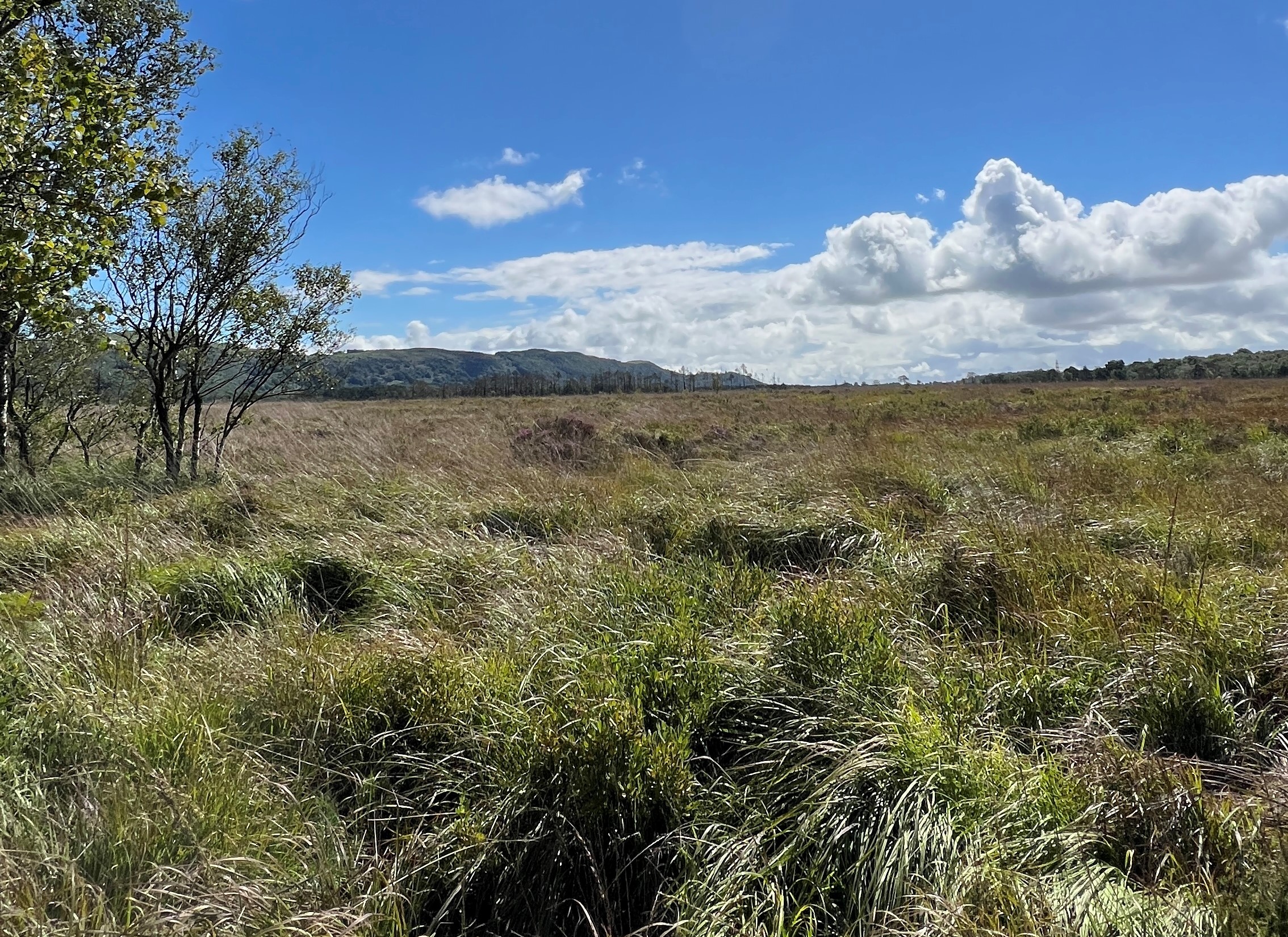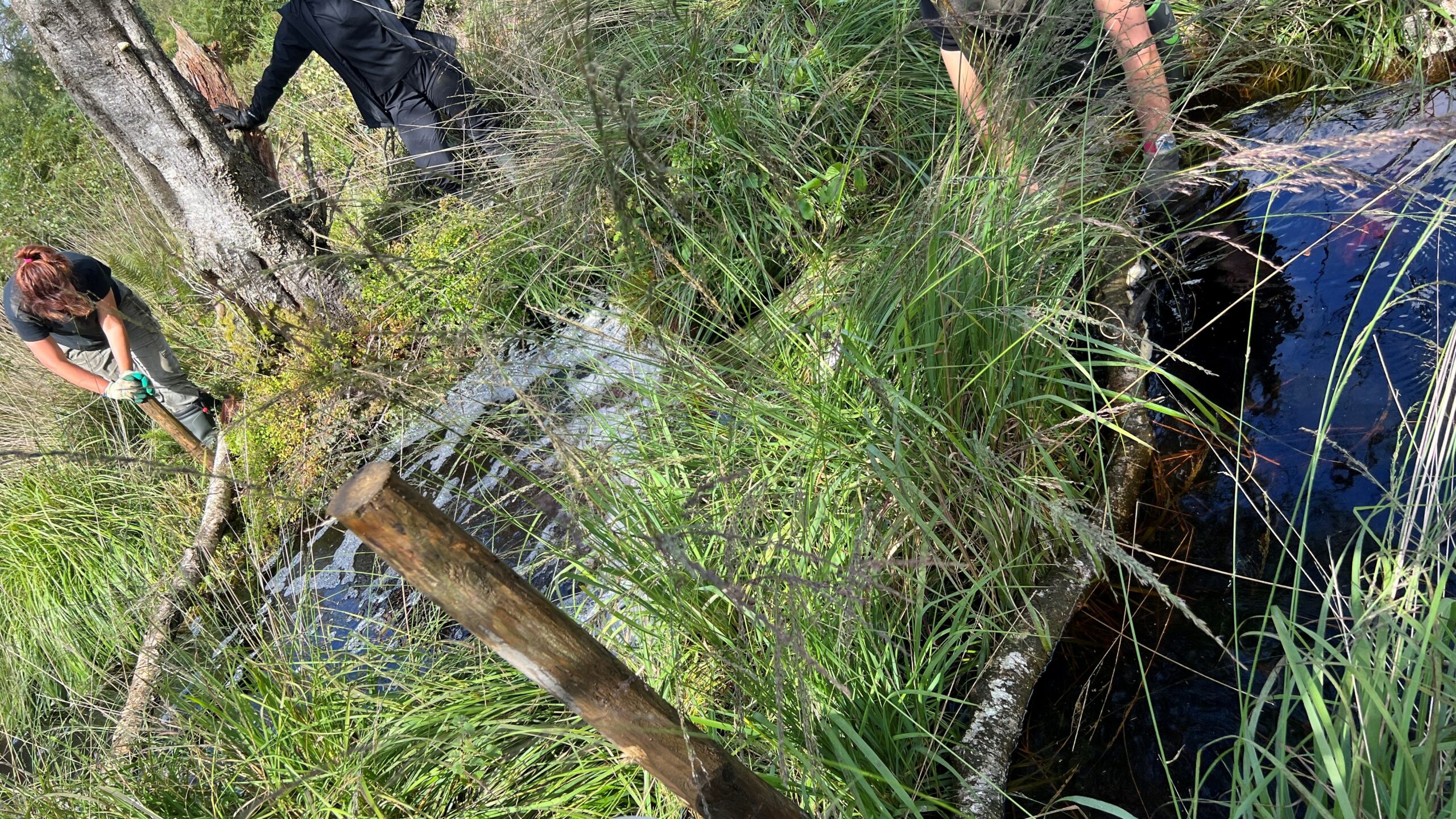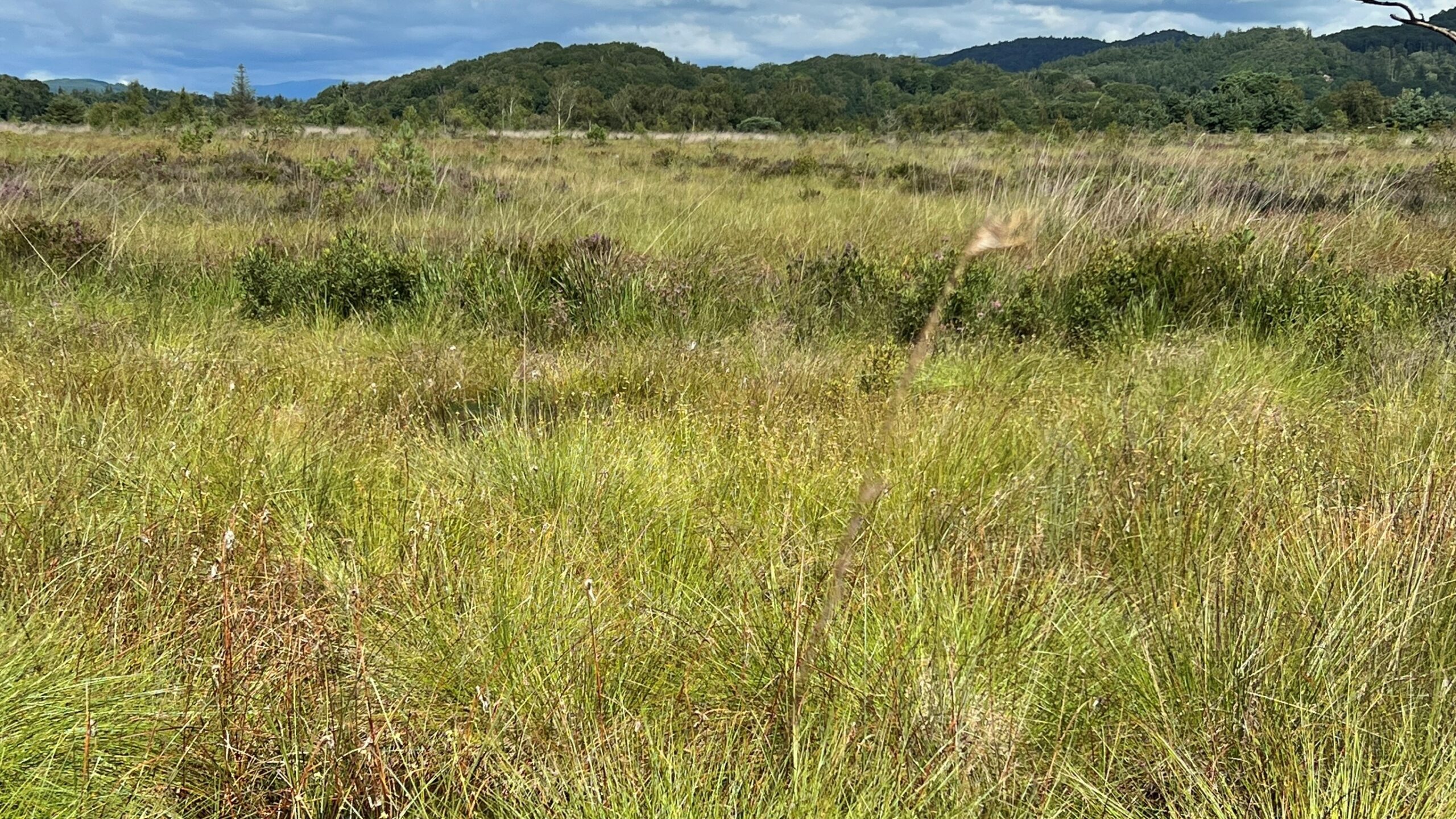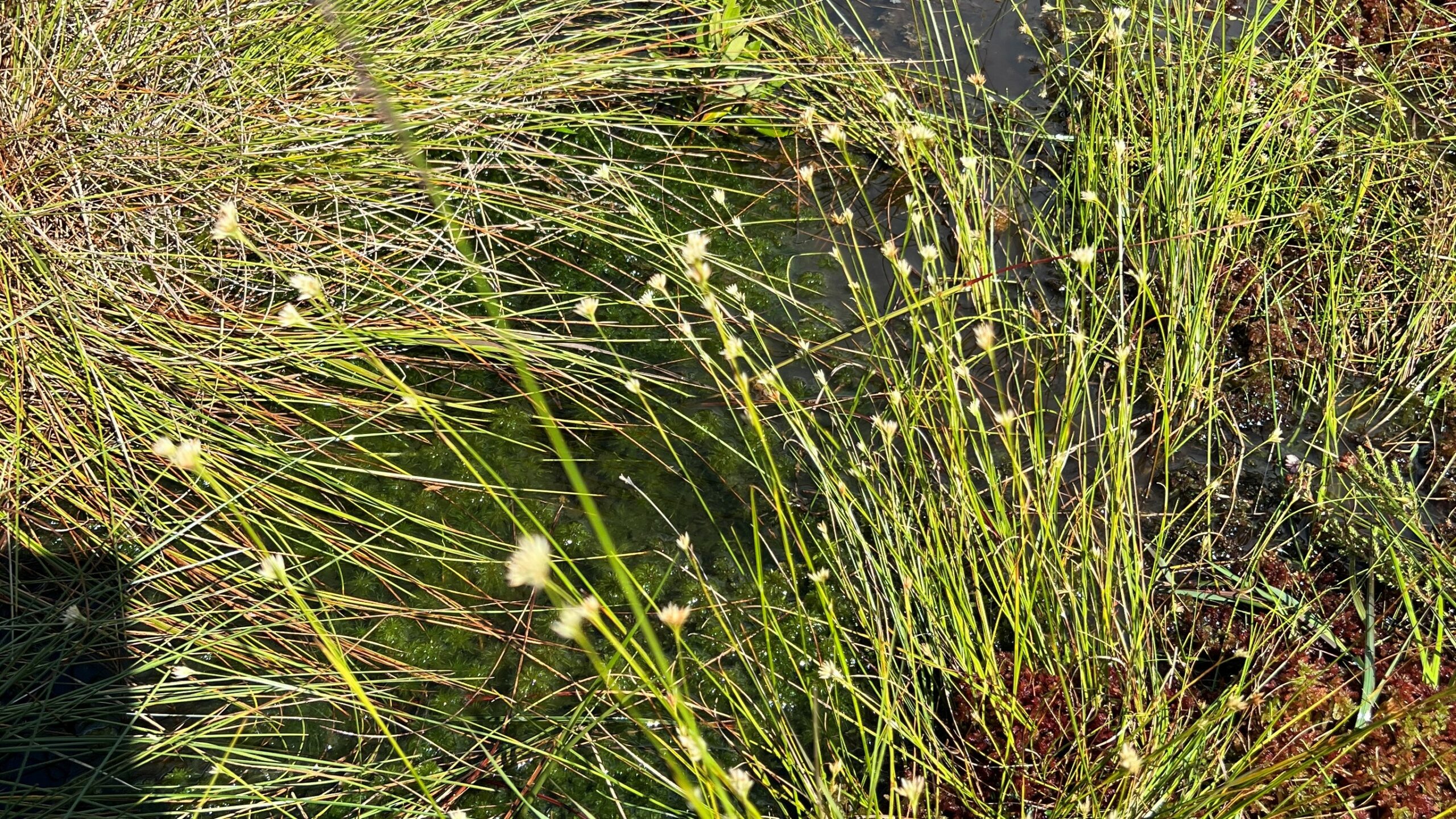The Leaky Dam Creation Day on the 15th August involved constructing several dams throughout the reserve, with the aim of slowing and storing water flows. As a result of this, the risk of flooding downstream will be managed, and the wet woodland and bog environment will be improved.

Image: The Flood Hub. Roudsea Wood and Mosses Nature Reserve.
The reserve is a mix of ancient woodland thriving in a limestone-rich environment and a peat bog that relies solely on rainfall in South Cumbria. Following an extensive ‘rewetting’ programme, the moss reserve is now one of the country’s best examples of lowland raised bog, contrasting to the dry degraded environment it once was due to peat extraction for horticulture.
Leaky dams are a Natural Flood Management (NFM) approach, which function by gently slowing down the water flow while maintaining the moisture of the peatlands.

Image: The Flood Hub. Two leaky dams being constructed along the watercourse.
A part of the ‘rewetting’ programme involved implementing a ‘cell and bund’ technique across the peat bog, creating hexagonal bunds of vegetation around specific areas (the cells) that held water. This process rehydrated the peat, creating temporary pools and new habitats which boosted biodiversity. The cells can be seen on the image below as the first area of low height vegetation. The bund is the line of taller, thicker vegetation behind which circles round the cell.

Image: The Flood Hub. Cell and Bund technique.
We also had the opportunity to explore the reserve, where we were fortunate enough to spot Ospreys and observe the fascinating presence of Sphagnum Moss. When saturated, Sphagnum Moss can store approximately 20 times its dry weight in water and act as a natural carbon sink, helping combat climate change.

Image: The Flood Hub. Sphagnum Moss
To find out more about natural flood management, visit the NFM page here.
To find other events taking place around the North West, click here.